Graham Reid | | 4 min read
Douglas Lilburn: Cicadas, Oscillators and Treefrogs
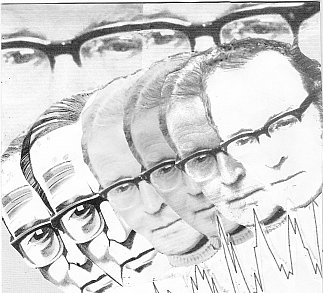
Most musicians with any intellectual integrity or curiosity -- unless they happen to be in Status Quo or ZZ Top -- will change direction or style at some point in their career. Maybe - as in the cases of David Bowie, Miles Davis and a few others -- a number of times.
But very few -- not even Bowie when he traded LA and cocaine for Berlin and austerity in the Low/Heroes period -- made such a dramatic shift as New Zealand composer Douglas Lilburn (1915-2001) when, 50 years ago, he traded in the orchestra and concert hall for electronics and a small studio in Wellington.
As Phillip Norman noted in his Lilburn biography, "By 1963 Lilburn was firmly established as the country's premier composer. He had writen three symphonies, seven orchestral pieces, nine works using string orchestra and a wide range of chamber and solo vocal music".
He had also assimilated elements of musique concrete into his work and yet, at age 50, he made a breathtaking and unequivocal change of direction.
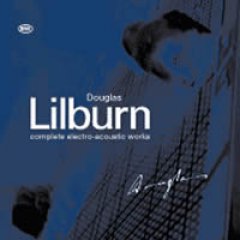 His move was so dramatic that Ross Harris -- one of those who followed him in that direction -- would later write in the liner notes to the excellent 3CD/DVD collection Douglas Lilburn; Electro-Acoustic Works (right) that "in the early 1960s few imagined that he would renounce the musical idioms which he had already mastered and dedicate the final years of his composing life to this strange new world".
His move was so dramatic that Ross Harris -- one of those who followed him in that direction -- would later write in the liner notes to the excellent 3CD/DVD collection Douglas Lilburn; Electro-Acoustic Works (right) that "in the early 1960s few imagined that he would renounce the musical idioms which he had already mastered and dedicate the final years of his composing life to this strange new world".
But they weren't just a few good year he had left. Lilburn explored electronic music for more than a decade until he retired.
What set Lilburn on this path was a curiosity about the possibilities of electronically generated sounds, and tape recorders, which he felt he could use to realise the music he had heard in his head, sounds from the natural world which he had tried to emulate or recreate through more traditional means.
In May '63 he left New Zealand on a sabbatical wihch took him to Hawaii and Canada (in Toronto he spent a day in the university's electronic studio and later wrote his imagination had been "dazzled with new sounds"), then he traveled to New York and Paris.
He went to England where he visited the famous BBC Radiophonic Workshop (which must have been working on the Dr Who theme around this time, the programme launched three months later) although he seems to have got a frosty reception.
He started to learn to edit tape and back in Toronto spent many hours over the following three months in the university's electronic music studio with its director Dr Myron Schaeffer.
By the time he arrived back in New Zealand he was enthusiastically advocatng that the Victoria Unversity in Wellington establish an electronic studio. Piece by piece it came together -- it opened in '66 but Lilburn and others had already been working and recording there during that time.
The studio became a drop-in workshop for many composers, among them John Cousins, John Rimmer, Jack Body, Ross Harris, Gillian Bibby and Ian McDonald.
In '75 McDonald said, "My intention in involving myself in electronic music composition generally is to satisfy a desire for experience and mastery in all contemporary musical composition techniques.
"But there are other more personal considerations. It provides an opportunity for contact with other composers as many of us meet at the studio which for so long has been the only professional electronic music studio in New Zealand."
Cousins would later write to Jack Body acknowledging Lilburn by saying that the tribute to him is in the all of the music on the box set of recordings which were collected to illustrate the breadth of Lilburn's electronic music and that "without him we would all have been denied the wonders of this marvellous medium" of composition.
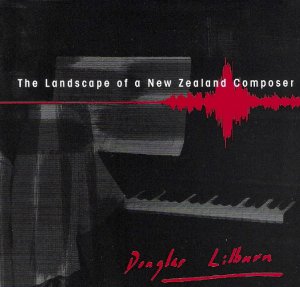 So Lilburn not only established a place where he could work, but which also gave a platform to others wanting to explore similar terrain.
So Lilburn not only established a place where he could work, but which also gave a platform to others wanting to explore similar terrain.
In the 10CD audio-documentary box set Douglas Lilburn: The Landscape of a New Zealand Composer (right), Ross Harris says "I don't think Douglas was exactly a whiz kid when it came to electronics, he always treated the equipment with such respect that one eventually suspected he was slightly worried by it all."
Lilburn's work in the studio -- collected in that Electro-Acoustic box set -- includes some exceptional pieces, notably Poem in Time of War ('67) for which he used a sample of young Vietnamese girl singing a poem for her husband who was a soldier. His electronic additions, especially the powerful coda, make for disconcerting and uneasy listening.
Equally however he used electronic sound to more closely parallel or evoke natural sounds, as in works which reflected or evoked the natural world.
Speaking of Lilburn's spiritual relationship with nature, Martin Lodge suggests the attraction of electro-acoustic music was that the natural world could be brought directly into the artist (through tapes and sounds generated which can mimic the sounds of water, birds and wind).
Body -- again in Landscape set -- tells of writing to LIlburn about the sound of cicadas and Lilburn replying that he should not forget their sound, "that was his way of suggesting that one should look for one's material, or one's impulses, from the environment".
Lilburn saw the machinery in the electronic studio as compositional tools in much the same way as string instruments are.
[Article continues below the clip]
Looked at today when recording studios have 72 tracks, digital technology and a battery of computers, there is something quaint -- but hands-on -- about the way Lilburn worked.
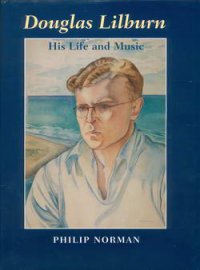 He took this method of the production of sounds and music very seriously.
He took this method of the production of sounds and music very seriously.
Not that his works were met with acclaim or perhaps even understood at the time.
Helen Young, former manager of Concert FM, says they were nervous about broadcasting his electro-acoustic work and listeners didn't receive it at all well.
Or do even now: "We don't hear electronic music, do we?"
She said that in '77 . . . and it might be fair to observe that Lilburn's innovative electro-acoustic music goes largely unheard even now.
Assistance in the preparation of this piece has come from SOUNZ (see here) which has copies of both the box sets mention.
The complete electro-acoustic music (with sound samples) is available here.
The aural documentary The Landscape of a New Zealand Composer is available here.
Recommended reading is Philip Norman's biography. (See here)


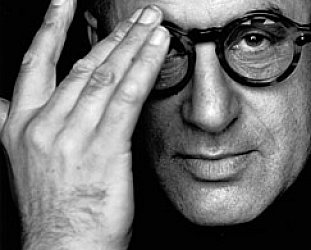
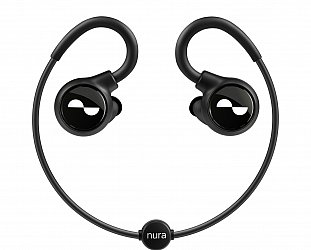

post a comment